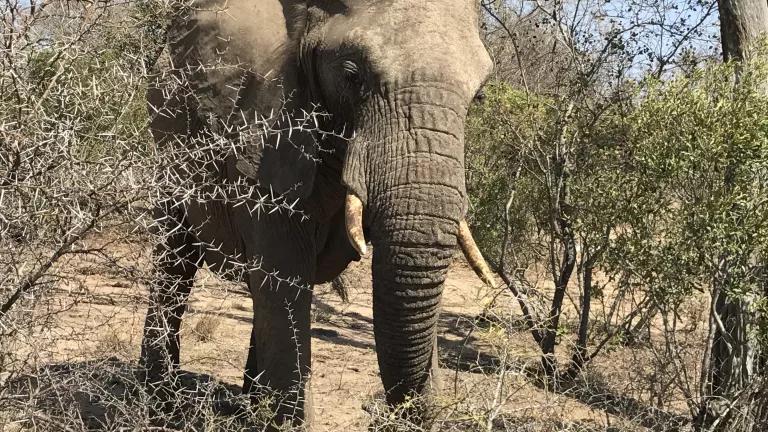
NRDC has just started the process of asking for a court’s approval to join a case on New York State’s behalf—along with the Center for Biological Diversity, the Humane Society of the United States, and the Wildlife Conservation Society—to defend the state’s ivory ban. In 2014, New York placed significant restrictions on its ivory market, the largest in the country. Four years later, after failing to defeat the bill in the state legislature, two New York antique dealer associations are trying to undo this victory for elephants by challenging the law in court, alleging that it is unconstitutional.
New York’s ivory law is a critical piece of a larger effort to save elephants. It must remain on the books. Rising demand for elephant ivory for jewelry and decorations, among other uses, has driven extraordinary levels of poaching in Africa. According to a 2014 study published by the National Academy of Sciences, more than 100,000 African elephants were killed between 2010 and 2012. The Great Elephant Census of 2016 showed that savanna elephant populations declined 30 percent between 2007 and 2014, equaling a loss of 144,000 elephants (savanna elephants are distinguished by their large ears and found throughout the grassy plains and bushlands of Africa). And a 2013 study by scientists at the Wildlife Conservation Society showed that African forest elephant numbers had declined by about 62 percent between 2002 and 2013, leading scientists to estimate that they may become extinct within ten years (forest elephants have smaller ears and downward pointing tusks, and are found in the densely wooded forests of west and central Africa).
Such alarming declines in such a short time make it clear that New York desperately needs this law to help end the slaughter of elephants that supply its ivory markets. It may come as a surprise to some that New York ivory markets were alive and thriving prior to this law. But that’s just what was happening despite a ban on any sale of ivory sourced from Africa after 1978. These bans never stopped unscrupulous traffickers, who used the pre-1978 loophole to sneak products from recently-killed elephants onto shelves under the guise of “antiques.” For example, a 2008 ivory survey in New York City found 11,376 items for sale in 124 outlets like gift shops and antique markets, more than ten percent of which came from China and were likely illegal. To make a dent in this market and help end the slaughter of these majestic creatures, New York had to close that loophole.
The law prohibits the sale, purchase, trade, barter, and distribution of elephant or mammoth ivory and rhino horn, save for a few narrow exceptions (i.e., certain musical instruments; objects that serve educational or scientific purposes such as museum pieces; 100-year-old antiques that are less than 20 percent ivory with documented proof of provenance; and transfers to legal beneficiaries of trusts/estates). It also increases fines and jail time for anyone who violates New York’s wildlife trafficking laws. Until 2014, the punishment was effectively just a slap on the wrist. But this law imposes a fine of $3,000 or twice the article’s value for the first offense, $6,000 or triple the article’s value for the second offense, and a Class D felony for articles worth more than $25,000.
Even though there are exceptions for legitimate antiques, it’s not enough for some dealers desperate to maintain a business model that depends on old fashioned and eccentric ideas about how cool it is to have part of a dead elephant in a piece of furniture or art. Instead of making amends for the harm their trade causes elephants, they’re intent on undoing a successful law that’s helping keep elephants alive.
That’s why NRDC and its partners stand ready to do battle with people who have been making money off dead elephants for decades. We welcome the fight and are confident we will prevail.

